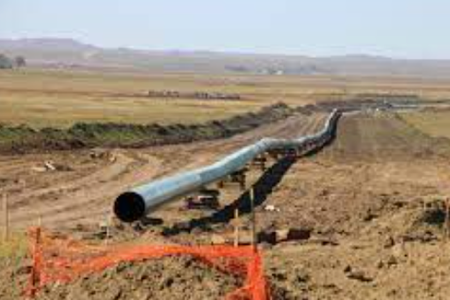The United States is producing more oil than any country in history — topping 13.4 million barrels per day in 2025 — reshaping global energy flows, trade patterns, and geopolitical dynamics. The story is often framed around drilling intensity, completion efficiency, or operator discipline. But behind the record-breaking production levels lies a deeper, more strategic force:
Facilities Engineer plays a critical role in ensuring the safe, efficient, and cost-effective construction and operation of oil and gas facilities. Do you provide services to Oil & Gas Operators related to new facility construction and looking to grow your sales? Buy the list now to get you started.
Infrastructure is the real engine of America’s rise as the world’s energy superpower.
From field-level reliability systems to global LNG architecture, infrastructure investments have transformed U.S. shale basins into fully optimized, globally connected energy ecosystems. This blog breaks down how infrastructure — physical, digital, and power-based — is redefining production, reducing costs, and linking American hydrocarbons to global markets.
Infrastructure: The Backbone of Modern Oil & Gas
In oil and gas, infrastructure extends far beyond pipes and plants. It is the integrated network of systems that move energy from the wellhead to the world — enabling production, processing, transportation, storage, digital automation, power reliability, and market delivery.
Infrastructure includes:
- Pipelines, processing plants, and export terminals
- Power systems, microgrids, and electrification
- Produced-water handling and compression networks
- Digital automation platforms
- LNG liquefaction and marine terminals
- Offshore FPSOs and global project infrastructure
In 2025, this definition is expanding even further. Infrastructure now encompasses energy and data infrastructure — the systems needed to power AI-driven data centers, advanced automation, and emerging low-carbon technologies. It is the convergence of hydrocarbons, electrons, and digital systems.
1. Field-Level Infrastructure: Redefining Reliability and Uptime
The U.S. shale industry has matured, and the leading operators know that the biggest gains no longer come from drilling faster — but operating smarter. Field-level infrastructure is now central to reducing LOE, minimizing downtime, and stabilizing production across thousands of wells.
APA Corporation reinvested one-third of its $60 million savings into facilities, compression, and produced-water systems to drive long-term field efficiency. Management noted that these upgrades will begin delivering measurable cost reductions by 2026–2027.
Permian Resources demonstrated this shift by replacing 26 individual well-site generators with three centralized microgrids. The result? Stronger runtime, improved power economics, and more stable base production.
Field infrastructure is no longer “support equipment.” It is a strategic asset that directly impacts production curves.
2. Pipeline & Midstream Networks: Connecting Basins to Markets
The record U.S. production levels would be impossible without the backbone of midstream infrastructure that connects shale basins to refineries, petrochemical complexes, and export terminals.
Kinder Morgan, ONEOK, and Enterprise Products Partners are among the biggest drivers of this connectivity.
- ONEOK added 600,000 bpd of NGL pipeline capacity and 550 MMcf/d of gas processing capacity, unlocking new Permian throughput.
- Enterprise committed over $6 billion to new terminals, fractionation trains, and LPG/Frax expansions.
- Kinder Morgan is repurposing assets to divert incremental molecules and optimize system flows.
These expansions eliminate bottlenecks and turn basin-level production into export-scale supply.
3. LNG Infrastructure: Converting Molecules Into Global Power
The next wave of U.S. energy influence is being built on LNG.
Cheniere calls itself a “premier contracted infrastructure platform,” with long-term offtake agreements anchoring global LNG trade. Its ongoing expansions will add ~35 MTPA of new liquefaction capacity by 2030.
ConocoPhillips points to infrastructure-backed partnerships with QatarEnergy LNG, Port Arthur LNG, and Mexico’s Saguaro Energia as the architecture behind its long-term global gas strategy.
LNG infrastructure transforms U.S. natural gas from a domestic commodity into a globally traded energy security asset — supporting allies, stabilizing grids, and replacing coal in emerging markets.
4. Power Infrastructure: Energy for Energy Production
The most surprising infrastructure trend is the rise of distributed power systems.
Companies such as Liberty Energy (LBRT) and ProPetro (PUMP) are building gas-fired microgrids to deliver cleaner, cheaper power to both oilfield operations and the explosive growth of data centers.
- Liberty is building 1 GW of distributed generation infrastructure by 2027.
- ProPetro plans 1 GW of microgrid capacity by 2030, with 60–80 MW already committed.
These power networks reduce emissions, eliminate diesel reliance, and stabilize uptime — especially in remote basins with weak grid connectivity.
5. Digital Infrastructure: The Smart Backbone of U.S. Shale
Automation and real-time intelligence are now core infrastructure pillars.
Halliburton, SLB, Weatherford, and H&P have developed fully integrated digital platforms linking rig operations, subsurface analytics, and real-time production optimization.
SLB’s leadership states that investment in oil, gas, and low-carbon infrastructure is essential “to global energy security and economic growth.”
Digital infrastructure reduces maintenance cycles, improves production forecasting, and accelerates decision-making — making the entire upstream ecosystem more resilient and profitable.
6. Offshore Megaprojects: The Second Pillar of Supply Security
While U.S. shale dominates headlines, offshore infrastructure is experiencing a renaissance.
Major developments across Suriname, Namibia, Mozambique, Brazil, and the North Sea are coming online through FPSOs, subsea networks, and floating LNG terminals.
Companies like Transocean, TotalEnergies, Chevron, and ExxonMobil view offshore infrastructure as strategic for national energy independence and long-cycle stability.
This offshore resurgence provides a long-term counterbalance to the shorter-cycle volatility of shale.
Why Infrastructure Matters for the Future
The U.S. is not simply producing more oil. It is producing smarter, more reliably, and more connected to global markets than at any time in history. The theme tying all of this together is infrastructure.
Infrastructure:
- Reduces cost
- Increases uptime
- Expands market access
- Stabilizes supply
- Powers emerging AI-era demand
- Connects domestic production to global trade flows
- Anchors energy security
The result is a reengineered energy ecosystem capable of sustaining record output even through price volatility, geopolitical tension, and shifting demand patterns.
Final Takeaway
The United States’ record oil production is not simply a drilling success — it’s an infrastructure success.
Every major operator, from Chevron and ExxonMobil to APA, ConocoPhillips, and Liberty, is building infrastructure as the strategy — not the afterthought.
Pipelines, LNG terminals, microgrids, and digital systems are the structural foundation that enable America’s energy dominance today and secure its role as the global energy stabilizer of tomorrow.


